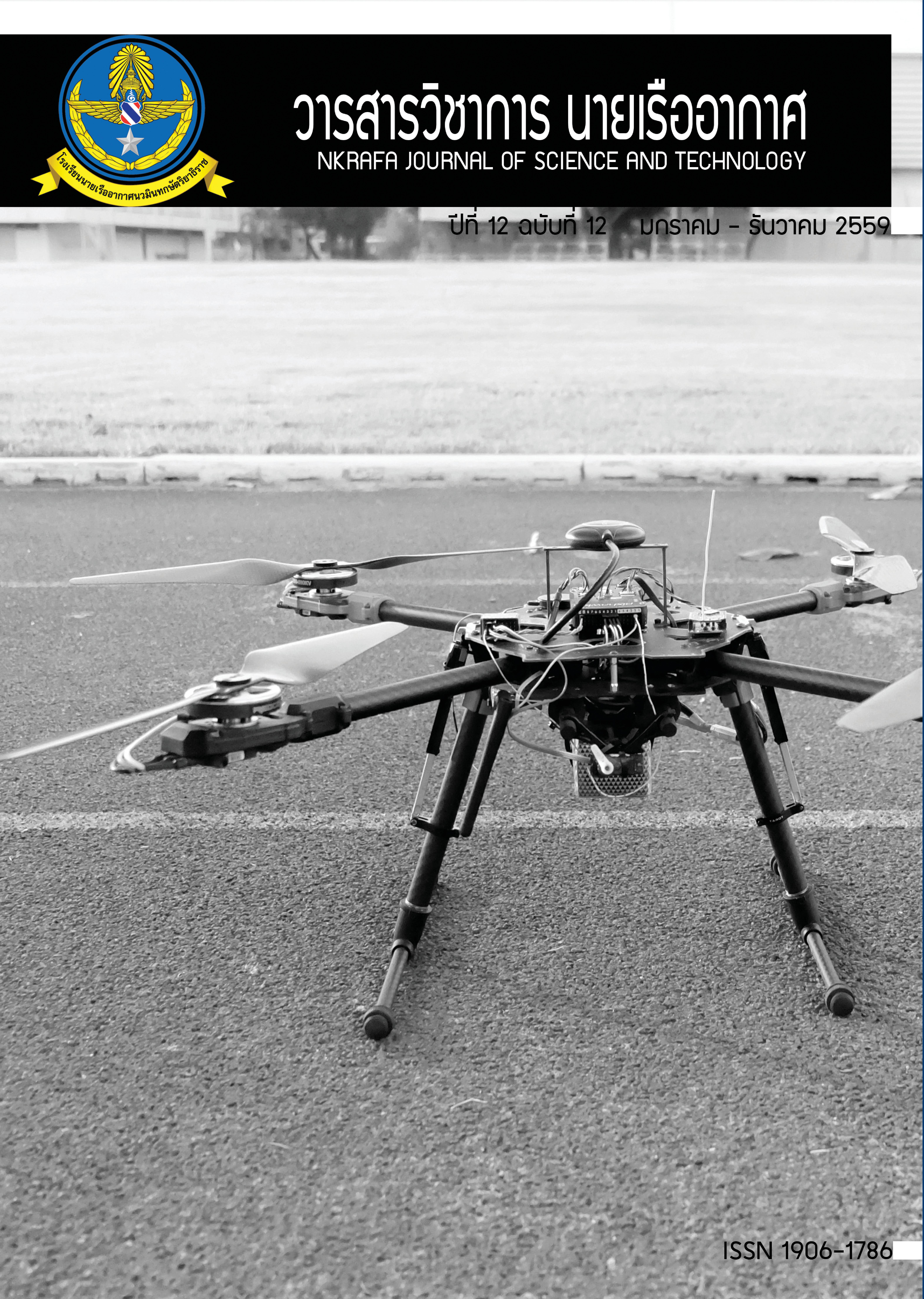Wing Structural Design construction and Testing of Closed Range UAV
Main Article Content
Abstract
In the surveillance and reconnaissance flight for information mission, the important part that makes the aircraft flying in the air is the wing. So, this research aims to design and testing a wing of an unmanned aircraft vehicle (UAV) using a conceptual design to determine a suitable shape of airfoil and a standard material testing system (MTS) respectively. It is previous to simulate the wing strength by the finite element method (FEM). The materials selected are glass fiber (GF) fabric carbon fiber (CF) fabric foam and balsa wood. The fibers direction must be ensured in the local and global coordinates system. In additional, the materials selection is also done by comparing the results from FEM computation under the Tsai-Wu criteria. The wing is then constructed by a manufacturer. The wing is attached by the adopted support on the material testing system (MTS), the wiffle tree kid to deliver the load from hydraulic and the digital gauges to measure the wing deflection. The value of wing strength obtained by testing is more than three time the maximum take-off weight.
Article Details
- Content and information in articles published in NKRAFA Journal of Science and Technology are comment and responsibility of authors of articles directly. Journal editorial do no need to agree or share any responsibility.
- NKRAFA Journal of Science and Technology Articles holds the copyright of the content, pictures, images etc. which published in it. If any person or agency require to reuse all or some part of articles, the permission must be obtained from the NKRAFA Journal of Science and Technology.
References
[2] ปริพนธ์ สุขพิมาย และคณะ. โครงการวิจัยและพัฒนาอากาศยานไร้คนขับยุทธวิธีระยะประชิด. ประชุมวิชาการระดับชาติ “นายเรือวิชาการ 58”. 26 -28 สิงหาคม 2558. สัตหีบชลบุรี, 2558.
[3] ตรีทศ สนแจ้ง. ยุทธศาสตร์กองทัพอากาศปี 2558, 2558.
[4] D.GAY. Matériaux Composites. 6th Ed.. Paris: Lavoisier Hermés, 2015.
[5] ณัฐพล นิยมไทย. โปรแกรมสำเร็จรูปการแผนแบบอากาศยาน Paksin. โครงการวิจัยและพัฒนาอากาศยานไร้คนขับ สกว. และสวพ.กห., 2547.
[6] D.P. Raymer. Aircraft Design:A Conceptual Approach. Washington D.C.: AIAA Inc., 1992.
[7] O.C. Zienkiewicz and others. The Finite Element Method Set. 6 th Ed. Vol.2. Elsevier Ltd., 2005.
[8] E.Careera. Theories and Finite Elements for Multilayered, Anisotropic, Composite Plates and Shells. Arch. Comput. Meth. Engng, 9(2): 87-140, 2002.
[9] วีระศักดิ์ อุดมกิจเดชา. อุตสาหกรรมสิ่งทอไทย. กรุงเทพมหานคร: โรงพิมพ์แห่งจุฬาลงกรณ์มหาวิทยาลัย, 2544.
[10] ฉัตรินทร์ สุนสิน และคณะ. การทดสอบโมเมนต์ดัดเพื่อหาสมบัติทางกลของไม้อัดสำหรับโครงสร้างแซนด์วิชผสมระหว่างไม้อัดกับกระดาษรังผึ้ง. Me-Nett 2013. 16 – 18 ตุลาคม 2556 . พัทยา ชลบุรี, 2556.
[11] http://www.fiberglassindustries.com. สืบค้นเมื่อ 22 มิถุนายน 2559.
[12] O.Schrenk. Schrenk’s Method Distributed Load A Simple Approximation Method for Obtaining the Spanwise Lift Distribution. NACA. Washington D.C., 7(4): 118-120, 1940.
[13] Pedro Ponces Camanho. Failure Criteria for Fibre-Reinforced Polymer Composites. DEMEGI, 2002.


